When he lost his eye, he only thought about joining here for another war. When his hand was amputated, he found that the case had made no more impression on him than a tooth extraction. He was shot in the head, he was a hair cut from his leg amputated, and he survived a series of plane crashes. With it, the heroes of Marvel movies can hide!
General Adrian Carton de Wiart was born on May 5, 1880 in Brussels. After his mother's death, when he was 6 years old, he moved with his father to Cairo. There, my father married an English lady who tried to turn her stepson into a 100% Englishman. The boy was fluent in several languages, was a great athlete, rode horses and learned to shoot. Sent to England, he went to study at Oxford, which he did not complete.
In 1899, when the Anglo-Boer War broke out, Adrian suddenly found himself attracted to war. By falsifying his personal data, he enlisted in the British army. As a foreigner, he would have no chance of legal service.
In Africa, however, he did not recover too long, was shot in the stomach and groin. During his convalescence, his real personalities came to light and he was sent back from the army. Even so, he did not give up. He returned to Cape Town, where he joined the cavalry. He was even promoted to corporal, but after 24 hours he was demoted for threatening to beat a sergeant!
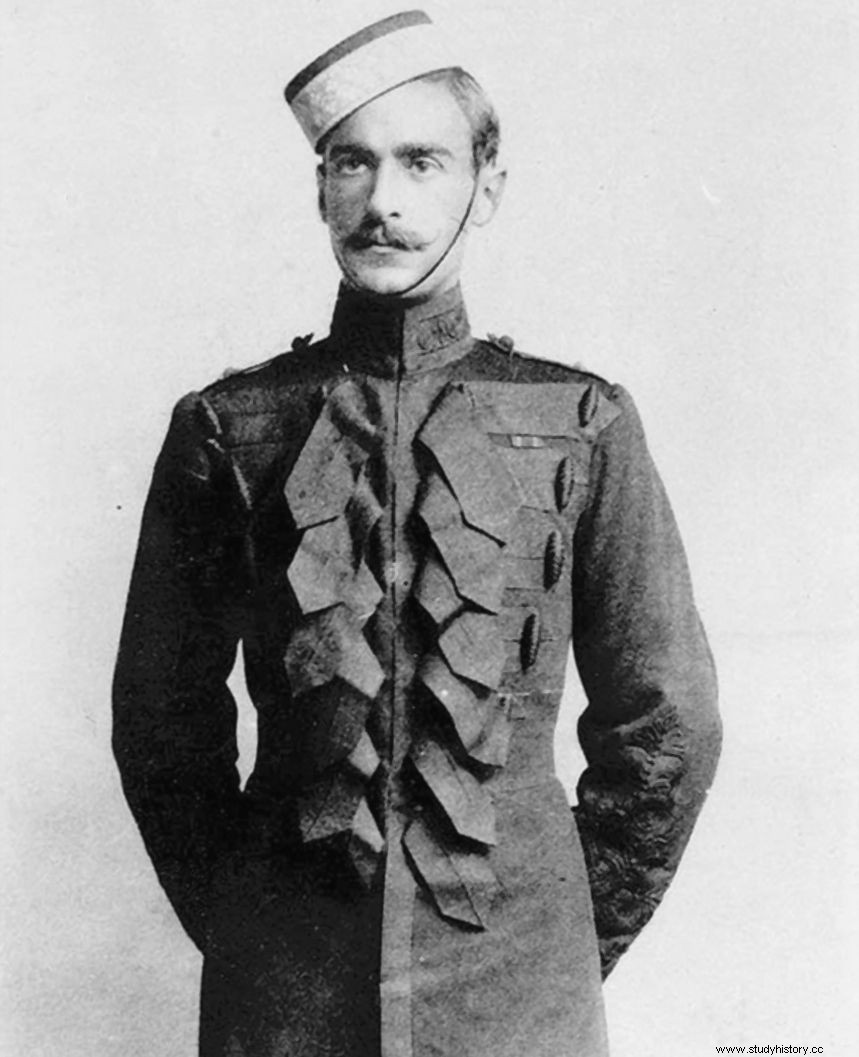
Carton de Wiart discovered his attraction to warfare back in the times of the Boer Wars. Here he poses in the uniform of a second lieutenant of the 4th Guards Dragons' Regiment. Photo from 1901, before numerous wounds changed his appearance. The photo is from the book "My Odyssey" (Bellona 2016).
On the fronts of the Great War
Despite unfavorable circumstances, Adrian Carton de Wiart received an officer's patent and became a second lieutenant. However, the war disappointed him, there was no way to prove himself in battle: the dream of a lonely charge on the Boer unit, heroic death and several posthumous Victoria Crosses slowly faded.
In 1901 he was assigned to a new unit stationed in India. There he discovered a passion for polo and risky horse javelin hunting for wild boar. He paid for it with a broken collarbone, a few ribs, and a sprained ankle.
When Great Britain entered the war with Germany in August 1914, Carton de Wiart just landed in Somalia, where he fought against the dervishes. During one of the attacks, he was hit in the eye twice and injured his elbow and ear.
The wound of the eye was the worst, and during the preliminary examination it was qualified for removal. It was a shock to the young officer. Despite this, he did not allow the operation to be carried out in Africa. Slyly, under the pretext of saving his eyesight, he hoped to leave for England. And this - as he wrote in his memoirs, entitled "My Odyssey" - opened the prospect of taking part in the war that was fought in Europe, all one with two eyes or with one .
The trip to England was successful, although the sea voyage itself was a nightmare for a strongly weakened and almost blinded soldier. He lost his eye, but he got his way and the military medical board allowed him to serve.
In February 1915, Adrian found himself in France with a black blindfold on his left eye. Bad luck became apparent just two months later, when at the beginning of the second Battle of Ypres a German bullet massacred his left arm, which had to be amputated.
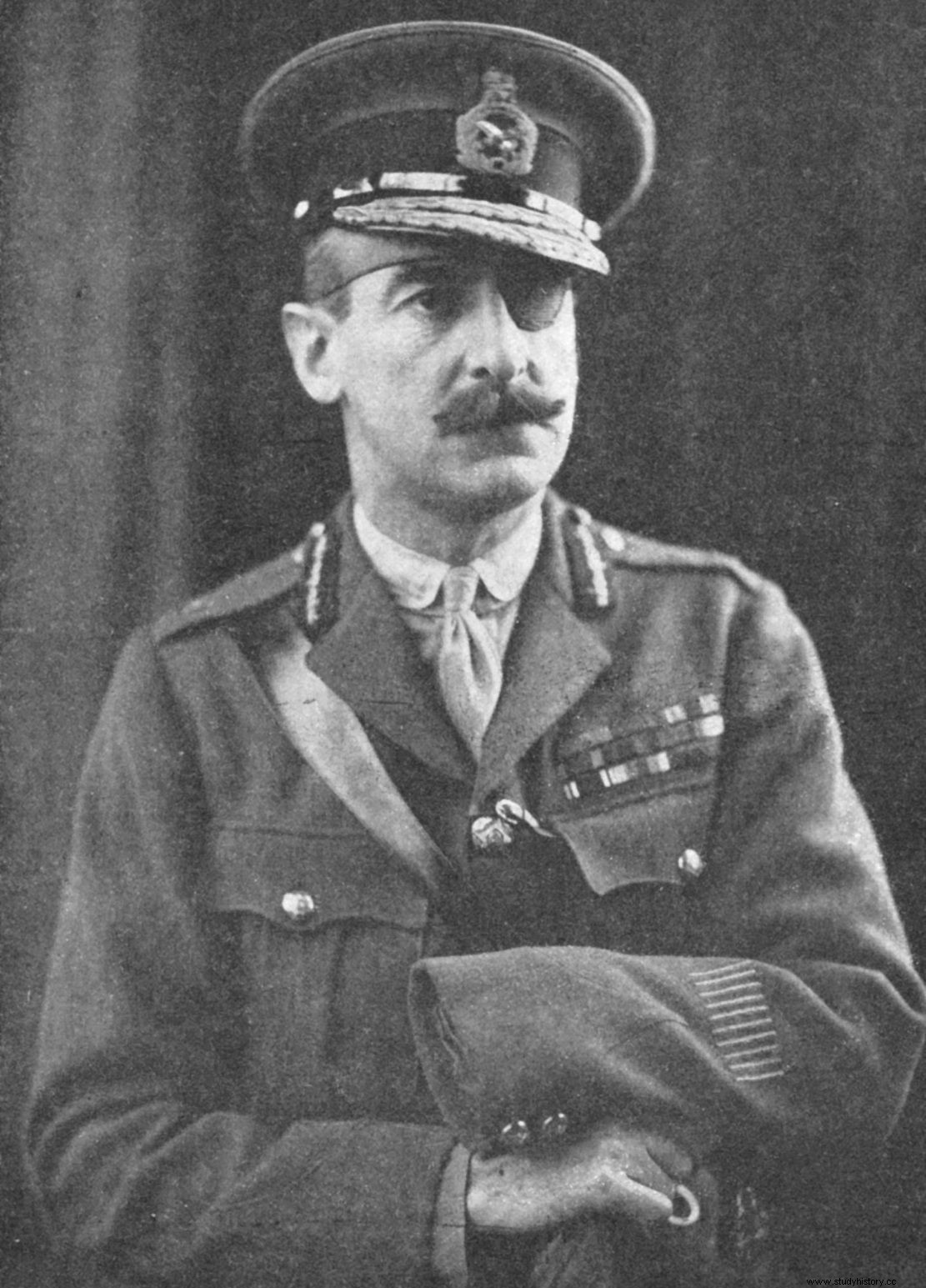
Within a year, Adrian Carton de Wiart lost an eye and an arm, but I don't prefer to fight. The photo is from the book "My Odyssey" (Bellona 2016).
As he then wrote: The whole procedure did not impress me more than tooth extraction and after an hour I was sitting on my own, eating lunch. On the second day after the amputation, he expressed a desire to serve in the infantry, and three weeks later he was released from the hospital.
Bloody offensives
At the head of an infantry battalion in July 1916 he took part in the offensive near the Somme. During the march to one of the positions, Adrian was injured again. A bullet from a German heavy machine gun went right through the back of his head without disturbing the skull! Since then, he has felt a tickle while cutting his hair.
When he left the hospital three weeks later, he was immediately injured by a shrapnel in the ankle! After another forced convalescence, Carton de Wiart became the commander of the brigade. Within a year, he was promoted from captain to brigadier general. It was quite a feat considering the average life span of an officer at the front was then two weeks.
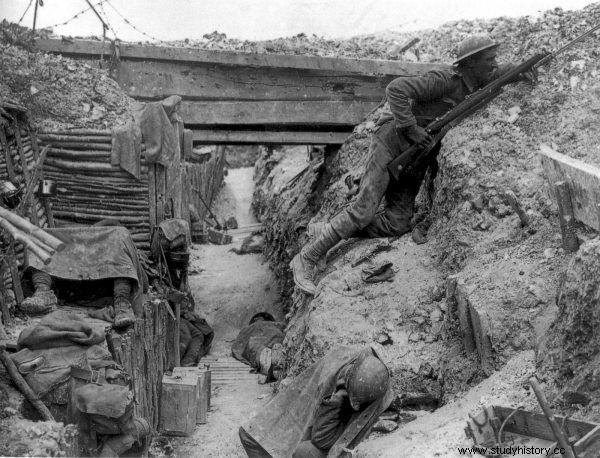
During the Battle of the Somme, a bullet pierced de Wiart right through the back of his head, but even that could not send him into the other world. The photo shows the British trenches during this battle (source:public domain).
Adrian, however, still attracted German missiles like a magnet. On the eve of the Battle of Arras in April 1917, he was again wounded in the ear with a shrapnel. In July 1917, he took part in the bloody Battle of Passchendaele, where the Allies lost as much as 450,000 soldiers for a small field advantage. After this clash, while his brigade was making sham operations near Arras, the general was wounded again!
This time hit the hip with a shrapnel , the latest wound cost him three months in the hospital. He had barely returned to the front and almost lost his leg ! This resulted in another stay at the clinic. He returned to France in October 1918, shortly before the end of the war.
Mission in Poland
In February 1919, General Adrian Carton de Wiart unexpectedly found himself in Poland, which was fighting the Bolsheviks. He became a member of the British military mission. Józef Piłsudski made a very strong impression on the general. They quickly became friends. In "My Odyssey" he wrote about the Commander:
In my life, I have met many celebrities, including the greatest people in the world. Piłsudski undoubtedly ranks high among them, and as a politician I would place him at the very top .
In Poland, the general had incredible adventures. He took part in negotiations with the Ukrainians, in the besieged Lviv. During the front inspection in Rivne, his wagon was shelled by Bolshevik artillery and derailed. The general and his companions barely managed to escape. Another time, while visiting Polish positions in the vicinity of Mława, he fought a short skirmish with the Cossack cavalry.
The general was also unlucky to travel to the skies. Landing in Kiev, he survived a plane crash. During the flight to Riga, his airplane was hit by a single rifle bullet by a clearly bored German soldier. After landing, the officer stated that the missile passed only a dozen centimeters from his seat!
On the way back, the pilot had to make an emergency landing twice in unprepared terrain. Ultimately, Carton de Wiart then returned to Warsaw by train. As if that were not enough, during the battles between Poles and Lithuanians for Vilnius, acting as a representative of the League of Nations, was almost shot by Lithuanian soldiers .
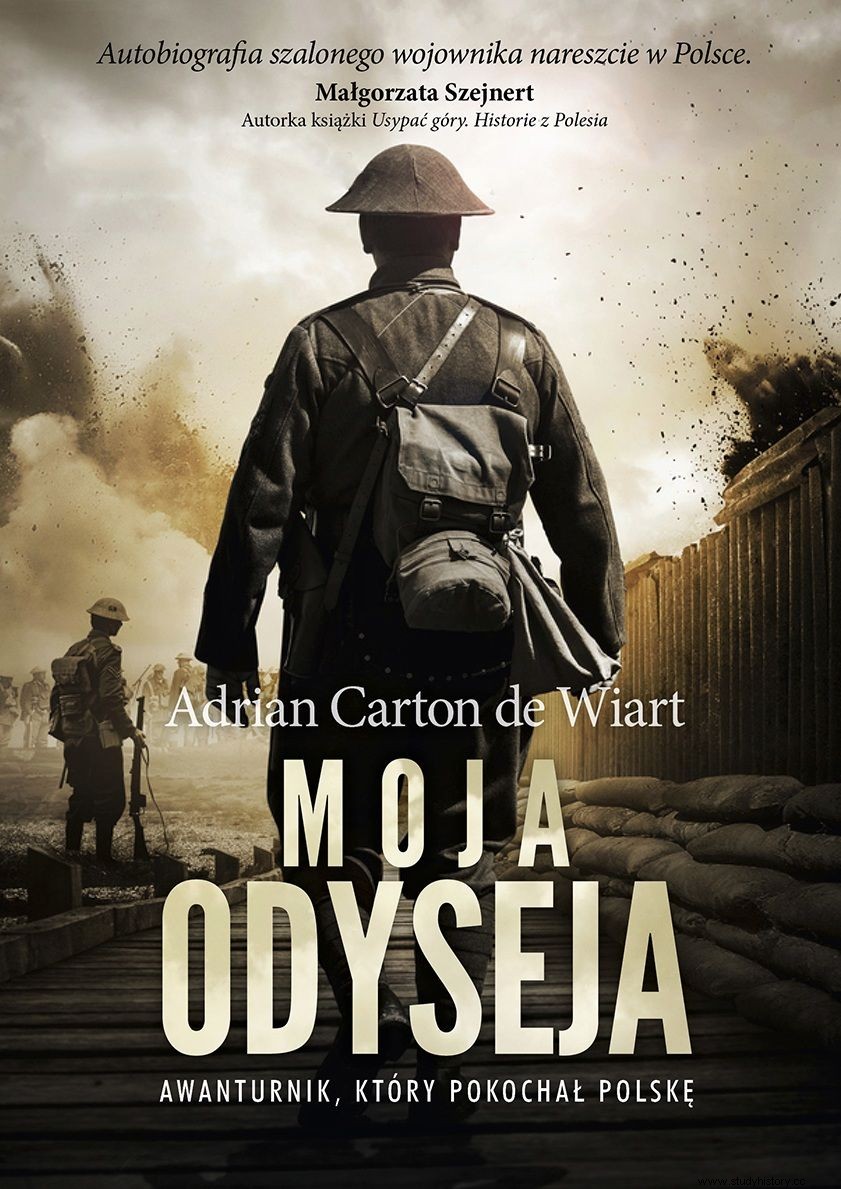
After the mission ended, Adrian Carton de Wiart settled in Poland, in the Prostyń estate, situated on an islet among Polesie marshes. From here it was only a few miles to the border with the Soviet Union. The general later admitted that those twenty years associated with our country were the happiest period of his life.
World War II
In June 1939, de Wiart put on his uniform again and became the head of the British Military Mission in Poland. In talks with Marshal Śmigły-Rydz, he unsuccessfully tried to convince him that the Polish army should not engage in a fight with the Germans at the borders, but instead base its defense on the Vistula line.
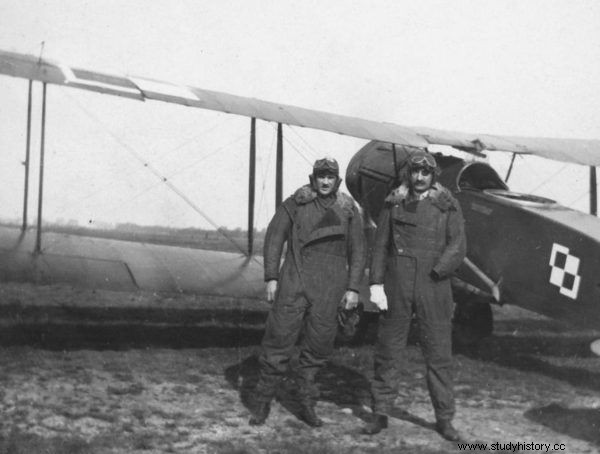
Although the flights around Poland did not turn out to be too lucky for de Wiart, he gladly stayed in our country for as much as 20 years. In this photograph from 1920, we see him next to the Polish pilot on the Bristol F.2B Fighter plane. The photo is from the book "My Odyssey" (Bellona 2016).
In the first days of September, Adrian Carton de Wiart witnessed the bombing of Warsaw. At that time, he also evacuated the British mission. After the Soviets entered Poland, he met Marshal Rydz-Śmigły and offered him that if he continued to fight on Polish soil, he would stay with him. However, the marshal crossed the Romanian border, and the general could not believe what happened then. Years later he wrote about Rydz:
His behavior contradicted everything I knew about Poles. It's hard for me to describe what I felt then.
In April 1940, Adrian was already fighting in Norway, near Trondheim. He wrote about this campaign that it was the most boring operation in his life . Then he was the commander of an infantry division deployed in Northern Ireland. He was to defend a scrap of an island in the unlikely event of a German invasion.
In April 1941 he became the head of the British military mission in Yugoslavia. When he was flying to meet the country's authorities, his Wellington's engines failed and the machine had to be launched in an emergency. The general was captured by the Italian and tried to escape five times. He regained his freedom in 1943 after the Italians used him to negotiate their ceasefire.

After he was released, instead of resting, de Wiart faced diplomatic duties. Here we see him in the honorable circle of participants at the Cairo conference, along with Chinese Marshal Chiang Kai-shek, US President Franklin Delano Roosevelt and British Prime Minister Winston Churchill (source:public domain).
However, after returning from captivity, the general did not rest. Winston Churchill appointed him a member of the British delegation at the Cairo conference in November 1943. Then Adrian Carton de Wiart flew to China as the personal representative of the British Prime Minister at Chiang Kai-shek. He had two plane crashes there.
After the end of the war, during his return from the mission in Rangoon, fell so unhappily down the stairs that he broke his spine. Despite this, he did not give up and after many months of rehabilitation, he returned to full fitness. Adrian Carton de Wiart, Knight of the Victoria Cross, Silver Cross of the Order of Virtuti Militari, Knight Commander of the Order of the British Empire and twenty other decorations, died in 1963 at the age of 83.
